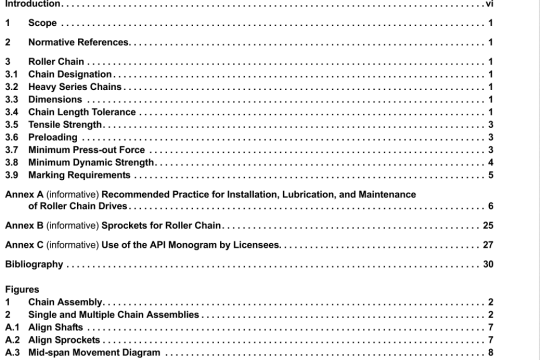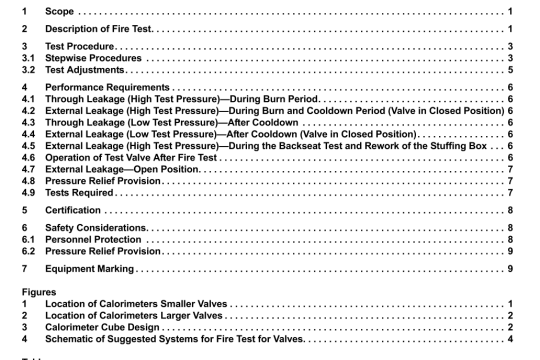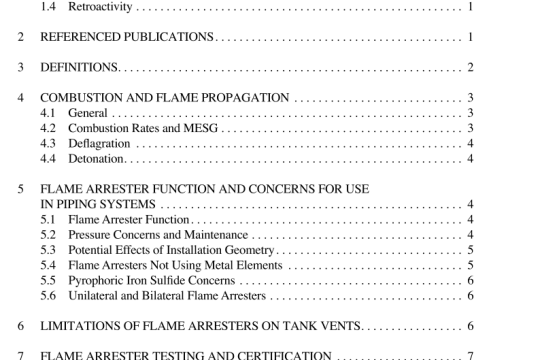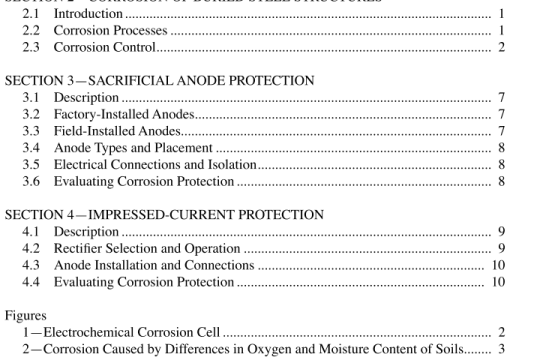API STD 594:2004 pdf download
API STD 594:2004 pdf download.Check Valves: Flanged, Lug, Wafer and Butt-welding.
The total cross- sectional area of the bolts shall be in accordance with the requirements of ASME B 16.34.
4.1.16 When valve design uilizes a stem that extends beyond the pressure boundary, it shall be provided with a means so that, in the event of a structural failure of stem-to- closure attachment items, the stem will not be ected through the pressure boundary while the valve is under pressure.
4.2 PLATES AND DISC
Valves are classifed as follows:
a. A single-plate valve has a plate or disc that closes the valve when flow reversal or gravity forces the plate or disc against the valve body seat. This closure may be aided by the
use of springs or other devices.
b. A dual-plate valve has plates that close the valve with the assistance of one or more springs, when flow reversal forces the plates against the valve-body seat.
c. For Type ‘A’ single-plate valves and Type ‘B’ valves, when a nut is used to assemble the disc or plate to the hinge arm, the nut shall be secured to prevent separation; the use of a single tack weld, lock washer or lock nut are not aceptable means.
4.3 SEATING SURFACES
4.3.1 The body and plate or disc seating surfaces may be of deposited weld metal, integral metal, mechanically retained metal, or a resilient material. On Type‘A single plate valves
and Type ‘B’ valves, a resilient seal ring may be ftted either to the body or plate seat as specified by the purchaser. The ring shall be designed to give a full metal to metal seal if the
resilient seal is inoperative or removed.
4.3.2 Welding is not pemitted on cast iron or ductile iron.
4.3.3 Brazing is permitted on cast iron and ductile iron only for attaching seating surfaces to the body or the plate and only if agreed to by the purchaser and the manufacturer. Furnace brazing is the only type of brazing permitted and may be used only if the parts are heated under closely controlled conditions, in a uniform manner, and to a temperature no higher than the lower critical temperature of the base material. Cooling shall be in the furmnace or in still air.
4.4 EXTERNAL BOLTS AND THREADED HOLES
4.4.1 Bolts and threaded holes with a diameter 1 in. or smaller shall have coarse (UNC) threads. Those larger than I in. diameter shall be of the eight-thread series (8 UN).
Bolt threads shall be Class 2A, and nut threads shall be Class 2B. Threads shall conform to ASME B1.1.
4.4.3 For Type B valves, cover flange bolts shall he continuously threaded stud bolts with heavy, semifinished hexagon nuts conforming to the requirements of ASME Bl&2.2. Hex bolts or cap screws conforming to ASME B 18.2.1 may also be used for NPS 21/2 and smaller valvcs. Hex bolts and cap screws shall be suitable for external wrenching only.
4.5 FLOW INDICATION
The valve body shall he furnished with a clearly visible cast, forged, machined-in, or die-stamped arrow to indicate the direction of flow through the salve.
4.6 GASKET SURFACE
Fasteiwrs in the flange seating surface shall be recessed to or below the flange gasket level. Interruptions in the seating area of a centered ASME B 16.20 spiral wound gasket for valve sizes NPS 6 and larger shall not exceed the limitations given in Figure 6. The permissible surface interruptions on smaller size valves shall be as agreed between purchaser and manufacturer but shall not exceed 50% of the gasket seating width.
Note: The degree of interruption may affect the sealability of a spiral. wound ga%ket.
5 Material
5.1 BODY AND COVER
The body of 1pe ‘A’ valves and the body and cover of Type B valves shall be made of a material conftnning to a purchaser selected material specification listed in the applicable ASMIi standard as referenced in 3.2.
5.2 PLATE AND DISC
Plate and or disc shall he made of a material whose cornsion resistance is greater than or equal to that olthe valve body.




